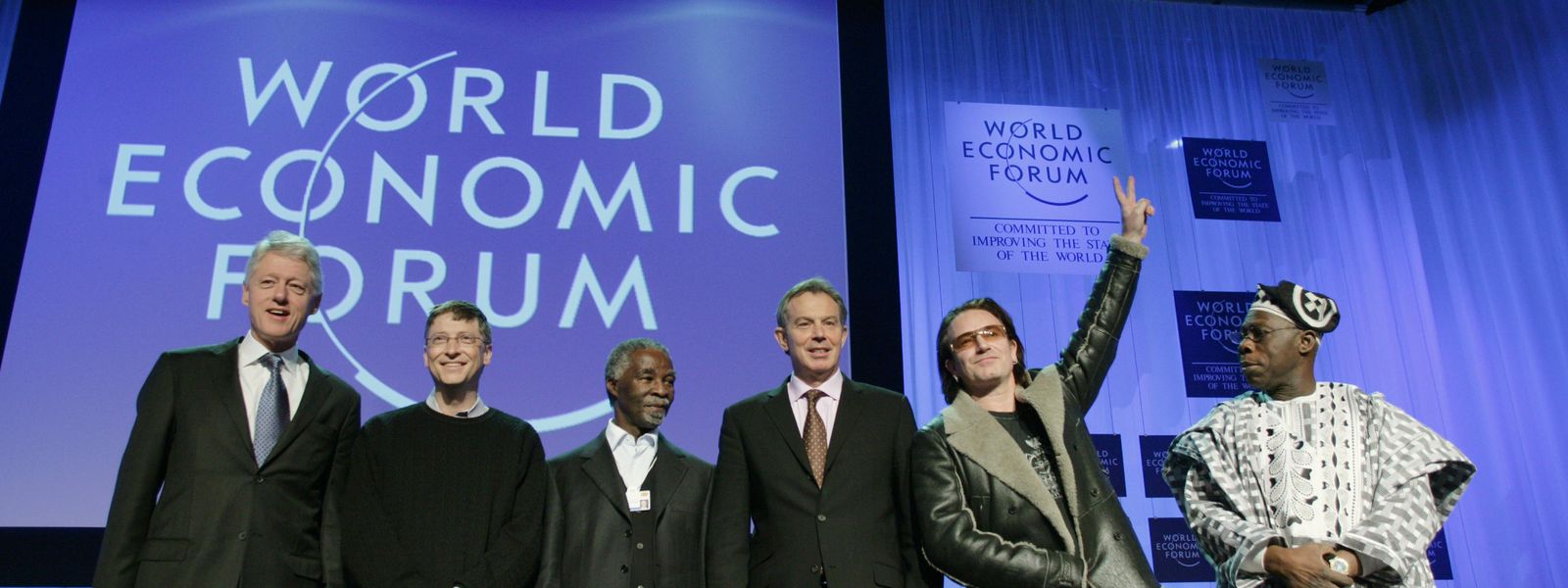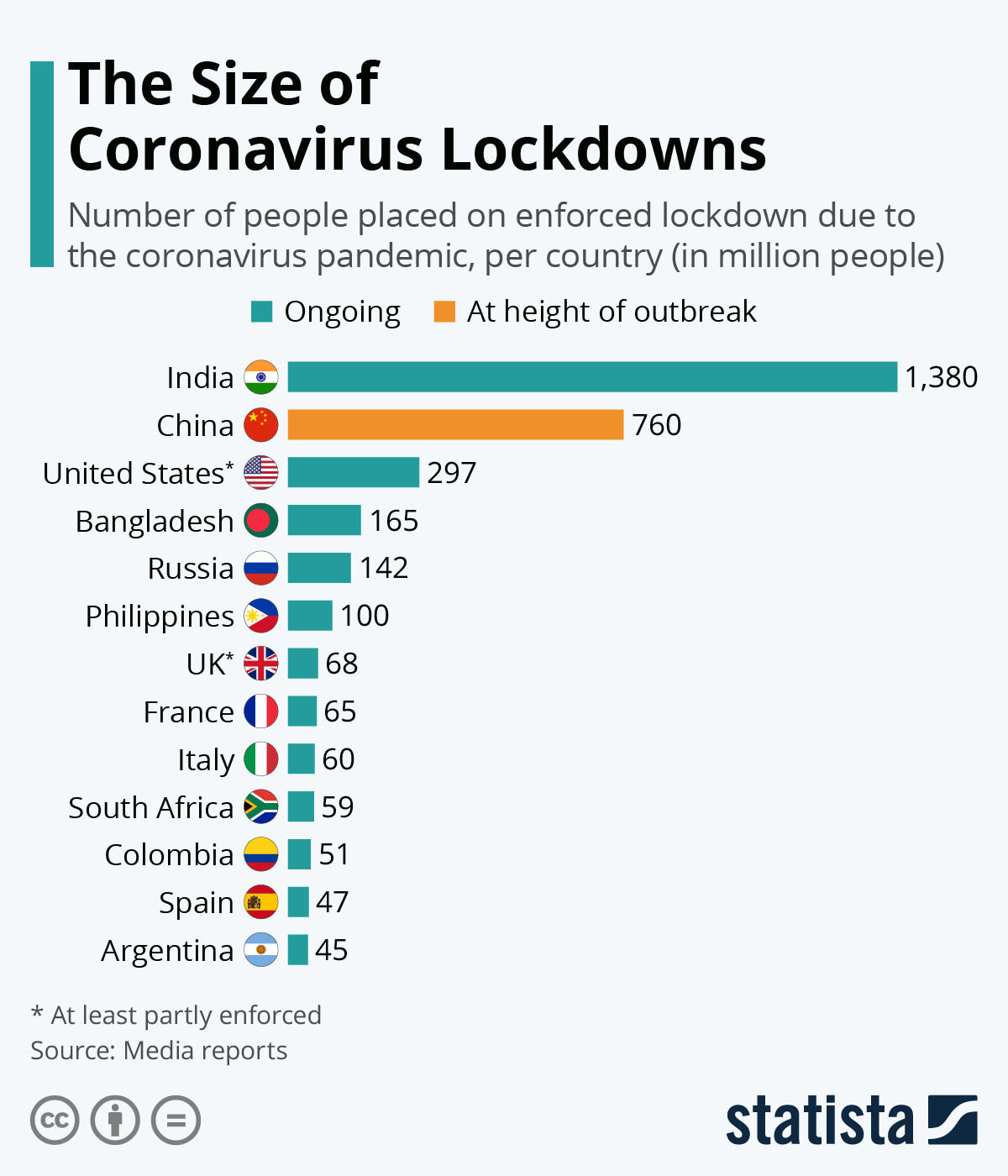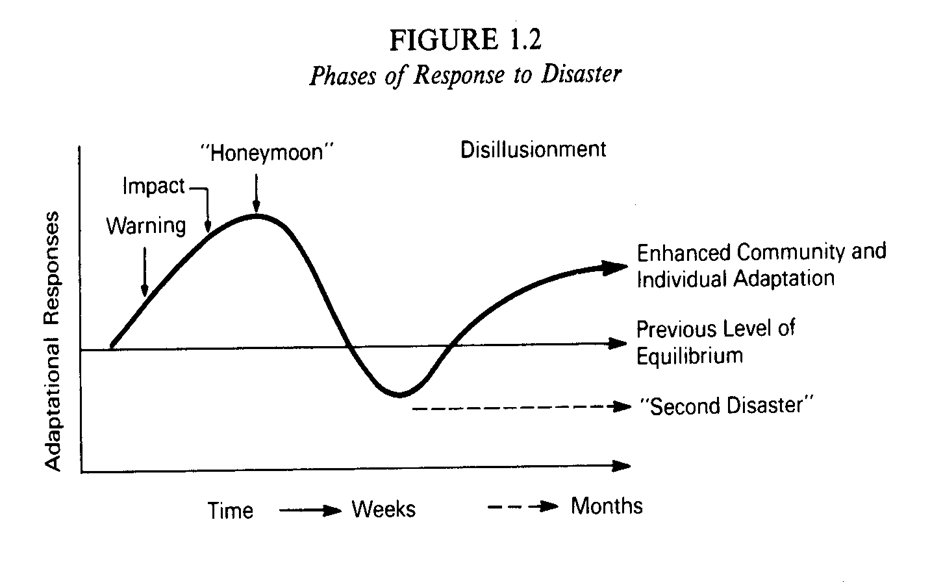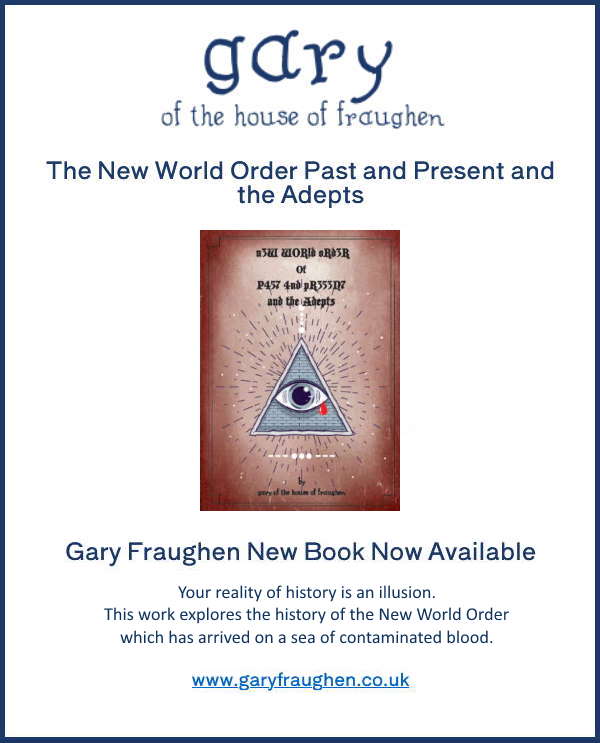WEF TO YOUR FACE: “LOCKDOWN IS THE WORLD’S BIGGEST PSYCHOLOGICAL EXPERIMENT – AND WE WILL PAY THE PRICE”
Tue 10:03 am +00:00, 20 Oct 2020
Many times, to find out who caused a problem you need to look who’s selling the solution.
Remember “Event 201“? It was them, the World Economic Forum (WEF), alongside the World Bank, and the Bill and Melinda Gates Foundation, mainly.
Remember “The Great Reset“? Pretty much same combo.
And now they have “The World Economic Forum COVID Action Platform”, their Covidiocracy propaganda website, where they “care”.
Davos plays host to the World Economic Forum (WEF), an annual meeting of global political and business elites (often referred to simply as “Davos”), and has one of Switzerland’s biggest ski resorts.
Officially, the WEF is a Swiss non-profit foundation, set up in 1971 to “improve the state of the world by engaging business, political, academic, and other leaders of society to shape global, regional, and industry agendas”.
Right.
Best WEF portrait I’ve read comes from UK analyst Steven Guiness, here’s a consistent chunk advancing my point:
“Event 201 consisted of fifteen ‘players‘ that represented, amongst others, airlines and medical corporations. Out of these fifteen, six are direct partners of the World Economic Forum. One is the Bill and Melinda Gates Foundation, with the other five being Marriott International (hospitality), Henry Schein (medical distribution), Edelman (communications), NBCUniversal Media and Johnson & Johnson.
To be clear, these organisations do not all operate at the same level within the WEF. For instance, the Bill and Melinda Gates Foundation and Johnson and Johnson are ‘Strategic Partners‘, the highest stage for a participant. Only 100 global companies are Strategic Partners, and to qualify for an invitation they must all have ‘alignment with forum values‘. Not only that, but Strategic Partners ‘shape the future through extensive contribution to developing and implementing Forum projects and championing public-private dialogue.’
Next come the ‘Partners‘ which comprise of Marriott International, Henry Schein and Edelman. Partners are described by the WEF as ‘world class companies‘ who possess a ‘strong interest in developing systemic solutions to key challenges‘.
Beneath the Strategic Partners are the ‘Strategic Partner Associates‘, which is the category that NBCUniversal Media fall under. Strategic Partner Associates include some of the largest businesses in the world, who are ‘actively involved in shaping the future of industries, regions and systemic issues‘. According to the WEF, associates also believe in ‘corporate global citizenship‘.
Finally, there are the ‘Associate Partners‘. Whilst they participate in ‘forum communities‘ and have a ‘strong interest in addressing challenges affecting operations and society at large‘, none were present at Event 201.
Every major industry in the world, be it banking, agriculture, healthcare, media, retail, travel and tourism, is directly connected to the World Economic Forum through corporate membership.
What is evident is that the deeper a corporation’s ties with the WEF, the greater its ability to ‘shape‘ the group’s agenda. Which brings us to what the WEF call their Strategic Intelligence platform – the mechanism which brings all the interests that the WEF concentrate on together.
They describe the platform as ‘a dynamic system of contextual intelligence that enables users to trace relationships and interdependencies between issues, supporting more informed decision-making‘.
As for why the WEF developed Strategic Intelligence, they say it was to ‘help you (businesses) understand the global forces at play and make more informed decisions‘.
Growing the platform is an ever present goal. The WEF are always looking for new members to become part of Strategic Intelligence by joining the ‘New Champions Community‘. But they will only allow a new organisation on board if they ‘align with the values and aspirations of the World Economic Forum in general‘. A 12 month ‘New Champions Membership‘ comes in at €24,000.
In arguing for the relevance of Strategic Intelligence, the WEF ask:
How can you decipher the potential impact of rapidly unfolding changes when you’re flooded with information—some of it misleading or unreliable? How do you continuously adapt your vision and strategy within a fast-evolving global context?
In other words, Strategic Intelligence is both an antidote to ‘fake news‘ and an assembly for corporations to position themselves as global pioneers in a rapidly changing political and technological environment. That’s the image they attempt to convey at least.

We can find more involvement from global institutions via Strategic Intelligence. The platform is ‘co-curated with leading topic experts from academia, think tanks, and international organizations‘.
‘Co-curators‘ are perhaps the most important aspect to consider here, given that they have the ability to ‘share their expertise with the Forum’s extensive network of members, partners and constituents, as well as a growing public audience‘.
It is safe to assume then that when co-curators speak, members and partners of the World Economic Forum listen. This in part is how the WEF’s agenda takes shape.
Who are the co-curators? At present, they include Harvard university, the Massachusetts Institute of Technology, Imperial College London, Oxford University, Yale and the European Council on Foreign Relations.
It was the Massachusetts Institute of Technology that in March published an article titled, ‘We’re not going back to normal‘, just as Covid-19 lockdowns were being implemented world wide. Citing a report by fellow co-curator Imperial College London that endorsed the imposition of tougher social distancing measures if hospital admissions begin to spike, MIT proclaimed that ‘social distancing is here to stay for much more than a few weeks. It will upend our way of life, in some ways forever.’
As well as co-curators there are what’s known as ‘Content Partners‘, who the WEF say are ‘amplified by machine analysis of more than 1,000 articles per day from carefully selected global think tanks, research institutes and publishers‘.
Content partners include Harvard university, Cambridge university, the Rand Corporation, Chatham House (aka the Royal Institute of International Affairs), the European Council on Foreign Relations and the Brookings Institute.
Getting into specifics, the way Strategic Intelligence is structured means that the higher your position in the corporate fold, the more ‘platforms‘ you can be part of. Whereas Strategic Partners must be part of a minimum of five platforms, Associate Partners only have access to a single platform of their choice.
Here is a list of some of the platforms hosted by the World Economic Forum:
- COVID Action Platform
- Shaping the Future of Technology Governance: Blockchain and Distributed Ledger Technologies
- Shaping the Future of the New Economy and Society
- Shaping the Future of Consumption
- Shaping the Future of Digital Economy and New Value Creation
- Shaping the Future of Financial and Monetary Systems
- Shaping the Future of Technology Governance: Artificial Intelligence and Machine Learning
- Shaping the Future of Trade and Global Economic Interdependence
- Shaping the Future of Cities, Infrastructure and Urban Services
- Shaping the Future of Energy and Materials
- Shaping the Future of Media, Entertainment and Culture
As we will look at in a follow up article, ‘The Great Reset‘ is made up of over 50 areas of interest that are formed of both ‘Global Issues‘ and ‘Industries‘, which in turn are all part of the WEF’s Strategic Intelligence platform.
Corporate membership is essential for the World Economic Forum to spread its influence, but in the end every single member is in compliance with the agenda, objectives, projects and values of the WEF. These take precedent over all else.
Also in concurrence with the WEF are the organisation’s Board of Trustees. Three of these include the current Managing Director of the IMF, Kristalina Georgieva, European Central Bank President Christine Lagarde and former Bank of England governor Mark Carney. The Trilateral Commission are also represented amongst the trustees through Larry Fink and David Rubenstein.
To add some historical context to the WEF, the group dates back to 1971 when it was originally founded as the European Management Forum. At the time the conflict in Vietnam was raging, social protest movements were building and the United States was about to relinquish the gold standard. By 1973 when the post World War Two Bretton Woods system collapsed and the Trilateral Commission was formed, the Forum had widened its interest beyond just management to include economic and social issues. From here onwards political leaders from around the world began to receive invitations to the institution’s annual meeting in Davos.
The World Economic Forum is classified today as the ‘International Organisation for Public-Private Cooperation‘, and is the only global institution recognised as such. It is in this capacity that the forum ‘engages the foremost political, business, cultural and other leaders of society to shape global, regional and industry agendas.’
Like how the Bank for International Settlements acts as a forum to bring central banks together under one umbrella, the WEF plays the same role by uniting business, government and civil society.
The WEF declare themselves as being a ‘catalyst for global initiatives‘, which is accurate considering ‘The Great Reset‘ agenda originates at the WEF level. And it is initiatives like ‘The Great Reset‘ and the ‘Fourth Industrial Revolution‘ which the WEF say are distinguished by ‘the active participation of government, business and civil society figures‘.
The Fourth Industrial Revolution (4IR) narrative was developed out of the World Economic Forum back in 2016. The WEF have confidently asserted that because of 4IR, ‘over the next decade, we will witness changes tearing through the global economy with an unprecedented speed, scale and force. They will transform entire systems of production, distribution and consumption‘.
Not only that, but the world is on the verge of witnessing ‘more technological change over the next decade than we have seen in the past 50 years.’
The group now plan to use ‘The Great Reset‘ as their theme for the 2021 annual meeting in Davos as a vehicle for advancing the 4IR agenda. 4IR is marketed as a technological revolution, where advancement in all the sciences ‘will leave no aspect of global society untouched.’ “
Read even more on WEF from Steven Guiness, whose blog should be in everyone’s bookmarks.
Now let’s hear from Forbes’ pre-review of 2020’s Davos meeting, held in January:
“As world leaders descend on Davos in their private jets and chartered helicopters every January for the World Economic Forum (WEF), the global charity Oxfam likes to remind them about the state of inequality.
Their research, which builds on Forbes‘ billionaires list among other sources, shows how the richest 2,000 people hold more wealth than poorest 4.6 billion combined.
The irony is not lost at the WEF, where the guest list gets richer every year. In 2018, 12 billionaires took to the stage at the annual event in Davos. This week there are 119 billionaires in attendance according to Bloomberg. Collectively they are worth around $500 billion.
But the disparities do not end there. Here are four other statistics which show how out of touch the World Economic Forum is becoming.
DAVOS BILLIONAIRES WORTH NEARLY HALF OF ALL WOMEN IN AFRICA
Oxfam’s original finding was that the 22 richest men in the world have more wealth than all of the women in Africa.Recommended For You
- Brexit Supporting French Rush To Buy London Homes
- Billionaire Wealth Hits $10 Trillion For First Time Ever Thanks To Government Stimulus: UBS
- The Best And Worst Offenders Of Sustainable Investing
That’s around $1.2 trillion. Or, to put it another way, just over double the collective worth of the 119 billionaires at Davos this year.

OVER HALF THINK CAPITALISM DOES MORE HARM THAN GOOD
It is against this stark backdrop that public relations firm Edelman surveyed over 34,000 people. Just over half (56%) thought that capitalism was doing more harm than good. “We are living in a trust paradox,” says Richard Edelman, the CEO of Edelman.
On WEF’s agenda this year is a “better kind of capitalism,” but still many remain to be convinced the summit does not actually erode trust.
U.K. Prime Minister Boris Johnson has banned British government ministers from attending the WEF this year, for fear of the image it brings. A government source told the Telegraph in December, “Our focus is on delivering for the people, not champagne with billionaires.”
In 2016, Johnson described the summit as “a struggle between people who want to take back control, and a small group of people who do very well out of the current system and who know Christine Lagarde.”
INDIA IS THE 7TH MOST UNEQUAL COUNTRY
This is the WEF’s own research, which shows India ranks as the 7th lowest country in the world in terms of equal opportunity.
Whether or not the organisers saw the irony in hosting 19 Indian billionaires (the second largest contingent of billionaires after the U.S.) is unknown. But it might be hoped that amassing them all on a Swiss mountainside will sort out some of India’s inequality issues.
Another report published by the Forum this week said that global inequality is going to worsen as a result of rapid technological change unless governments and business leaders do something about it.
Klaus Schwab, the founder and executive chairman of the WEF said at the opening of its 50th session last week he wanted the summit to be more of a “do-shop not a talk-shop.” – Forbes
I know I’m repeating myself, but I don’t do it nearly enough:
If you want the map of the near future, consult The Great Reset, Event 201 and everything Covid-related from WEF/World Bank/IMF, and less their lemmings like WHO and Bill Gates.
These are the people who delivered this astounding article from April 2020, showing how much pre-science they had over the damage they cause to this world. Most of his science was available (at least to their specialists) anytime before the insane Covid response from our governance (most of the data and analysis is not based on new reliable information, it was too early); and yet they went ahead with the collapse. The ongoning genocide is not a collateral effect, or an error, they prove awareness of the consequences, so decimating our lives was the plan all along.
Below you have WEF’s implicite “confession” integrally.
LOCKDOWN IS THE WORLD’S BIGGEST PSYCHOLOGICAL EXPERIMENT – AND WE WILL PAY THE PRICE
09 Apr 2020
By Dr Elke Van Hoof, Professor, health psychology and primary care psychology, Vrije Universiteit Brussel
- With some 2.6 billion people around the world in some kind of lockdown, we are conducting arguably the largest psychological experiment ever;
- This will result in a secondary epidemic of burnouts and stress-related absenteeism in the latter half of 2020;
- Taking action now can mitigate the toxic effects of COVID-19 lockdowns.
In the mid-1990s, France was one of the first countries in the world to adopt a revolutionary approach for the aftermath of terrorist attacks and disasters. In addition to a medical field hospital or triage post, the French crisis response includes setting up a psychological field unit, a Cellule d’Urgence Médico-Psychologique or CUMPS.
Have you read?
- 14 ways to protect your mental health in the pandemic, according to Public Health England
- Managing mental health during coronavirus – experts around the world share insights
- 4 ways to keep the momentum rolling on mental health
In that second triage post, victims and witnesses who were not physically harmed receive psychological help and are checked for signs of needing further post-traumatic treatment. In those situations, the World Health Organization recommends protocols like R-TEP (Recent Traumatic Episode Protocol) and G-TEP (Group Traumatic Episode Protocol).
Since France led the way more than 20 years ago, international playbooks for disaster response increasingly call for this two-tent approach: one for the wounded and one to treat the invisible, psychological wounds of trauma.
In treating the COVID-19 pandemic, the world is scrambling to build enough tents to treat those infected with a deadly, highly contagious virus. In New York, we see literal field hospitals in the middle of Central Park.
But we’re not setting up the second tent for psychological help and we will pay the price within three to six months after the end of this unprecedented lockdown, at a time when we will need all able bodies to help the world economy recover.
THE MENTAL TOLL OF QUARANTINE AND LOCKDOWN
Currently, an estimated 2.6 billion people – one-third of the world’s population – is living under some kind of lockdown or quarantine. This is arguably the largest psychological experiment ever conducted.

Unfortunately, we already have a good idea of its results. In late February 2020, right before European countries mandated various forms of lockdowns, The Lancet published a review of 24 studies documenting the psychological impact of quarantine (the “restriction of movement of people who have potentially been exposed to a contagious disease”). The findings offer a glimpse of what is brewing in hundreds of millions of households around the world.
In short, and perhaps unsurprisingly, people who are quarantined are very likely to develop a wide range of symptoms of psychological stress and disorder, including low mood, insomnia, stress, anxiety, anger, irritability, emotional exhaustion, depression and post-traumatic stress symptoms. Low mood and irritability specifically stand out as being very common, the study notes.
In China, these expected mental health effects are already being reported in the first research papers about the lockdown.
In cases where parents were quarantined with children, the mental health toll became even steeper. In one study, no less than 28% of quarantined parents warranted a diagnosis of “trauma-related mental health disorder”.
Among quarantined hospital staff, almost 10% reported “high depressive symptoms” up to three years after being quarantined. Another study reporting on the long-term effects of SARS quarantine among healthcare workers found a long-term risk for alcohol abuse, self-medication and long-lasting “avoidance” behaviour. This means that years after being quarantined, some hospital workers still avoid being in close contact with patients by simply not showing up for work.
Reasons for stress abound in lockdown: there is risk of infection, fear of becoming sick or of losing loved ones, as well as the prospect of financial hardship. All these, and many more, are present in this current pandemic.
THE SECOND EPIDEMIC AND SETTING UP THE SECOND TENT ONLINE
We can already see a sharp increase in absenteeism in countries in lockdown. People are afraid to catch COVID-19 on the work floor and avoid work. We will see a second wave of this in three to six months. Just when we need all able bodies to repair the economy, we can expect a sharp spike in absenteeism and burnout.
We know this from many examples, ranging from absenteeism in military units after deployment in risk areas, companies that were close to Ground Zero in 9/11 and medical professionals in regions with outbreaks of Ebola, SARS and MERS.
Right before the lockdown, we conducted a benchmark survey among a representative sample of the Belgian population. In that survey, we saw that 32% of the population could be classified as highly resilient (“green”). Only 15% of the population indicated toxic levels of stress (“red”).

In our most recent survey after two weeks of lockdown, the green portion has shrunk to 25% of the population. The “red” part of the population has increased by 10 percentage points to fully 25% of the population.
These are the people at high risk for long-term absenteeism from work due to illness and burnout. Even if they stay at work, research from Eurofound reports a loss of productivity of 35% for these workers.
In general, we know at-risk groups for long-term mental health issues will be the healthcare workers who are on the frontline, young people under 30 and children, the elderly and those in precarious situations, for example, owing to mental illness, disability and poverty.
All this should surprise no one; insights on the long-term damage of disasters have been accepted in the field of trauma psychology for decades.

But while the insights are not new, the sheer scale of these lockdowns is. This time, ground zero is not a quarantined village or town or region; a third of the global population is dealing with these intense stressors. We need to act now to mitigate the toxic effects of this lockdown.
WHAT GOVERNMENTS AND NGOS CAN AND SHOULD DO TODAY
There is broad consensus among academics about the psychological care following disasters and major incidents. Here are a few rules of thumb:
- Make sure self-help interventions are in place that can address the needs of large affected populations;
- Educate people about the expected psychological impact and reactions to trauma if they are interested in receiving it. Make sure people understand that a psychological reaction is normal;
- Launch a specific website to address psychosocial issues;
- Make sure that people with acute issues can find the help that they need
In Belgium, we recently launched Everyone OK, an online tool that tries to offer help to the affected population. Using existing protocols and interventions, we launched our digital self-help tool in as little as two weeks.
When it comes to offering psychological support to their populations, most countries are late to react, as they were to the novel coronavirus. Better late than never.













